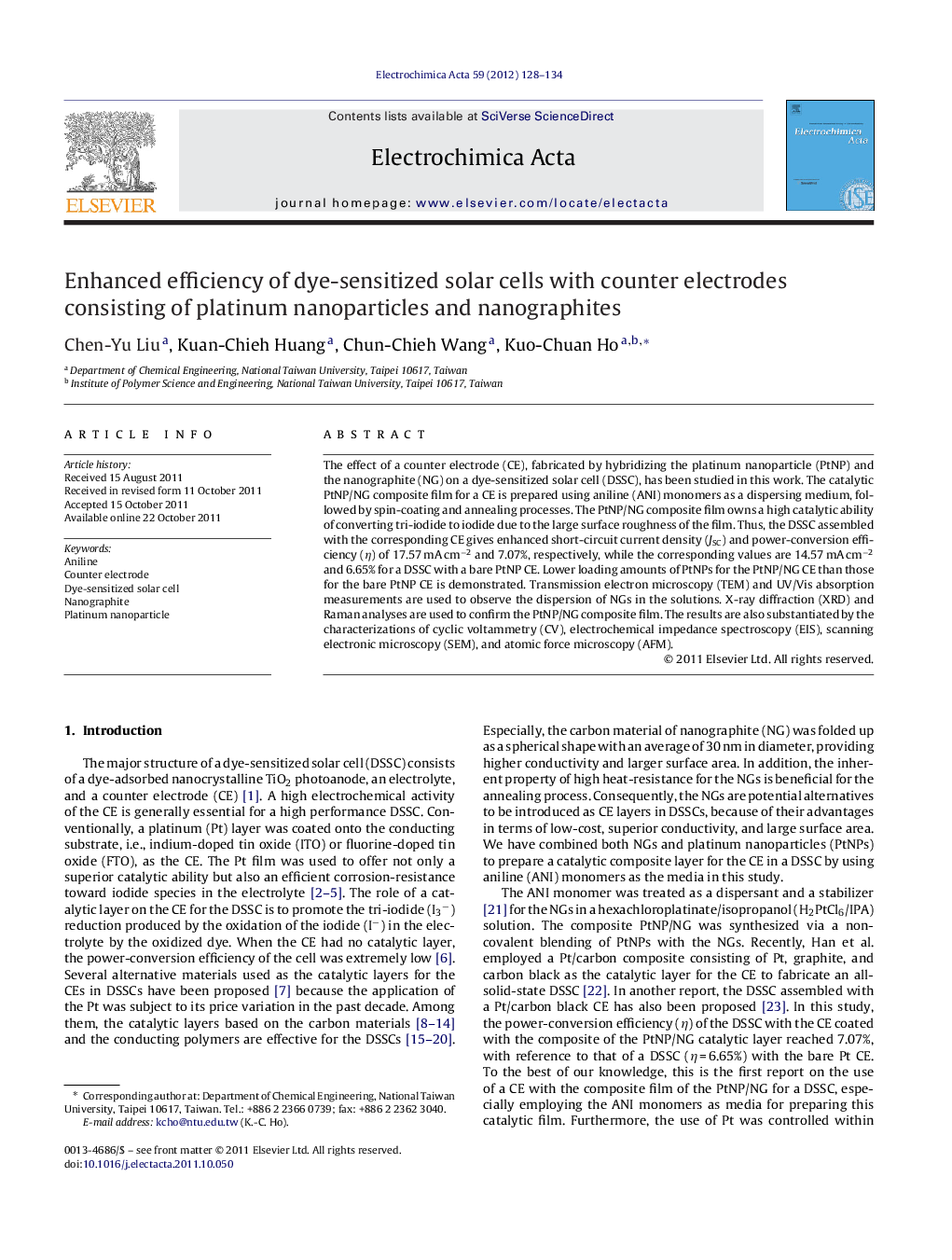| Article ID | Journal | Published Year | Pages | File Type |
|---|---|---|---|---|
| 189322 | Electrochimica Acta | 2012 | 7 Pages |
The effect of a counter electrode (CE), fabricated by hybridizing the platinum nanoparticle (PtNP) and the nanographite (NG) on a dye-sensitized solar cell (DSSC), has been studied in this work. The catalytic PtNP/NG composite film for a CE is prepared using aniline (ANI) monomers as a dispersing medium, followed by spin-coating and annealing processes. The PtNP/NG composite film owns a high catalytic ability of converting tri-iodide to iodide due to the large surface roughness of the film. Thus, the DSSC assembled with the corresponding CE gives enhanced short-circuit current density (JSC) and power-conversion efficiency (η) of 17.57 mA cm−2 and 7.07%, respectively, while the corresponding values are 14.57 mA cm−2 and 6.65% for a DSSC with a bare PtNP CE. Lower loading amounts of PtNPs for the PtNP/NG CE than those for the bare PtNP CE is demonstrated. Transmission electron microscopy (TEM) and UV/Vis absorption measurements are used to observe the dispersion of NGs in the solutions. X-ray diffraction (XRD) and Raman analyses are used to confirm the PtNP/NG composite film. The results are also substantiated by the characterizations of cyclic voltammetry (CV), electrochemical impedance spectroscopy (EIS), scanning electronic microscopy (SEM), and atomic force microscopy (AFM).
